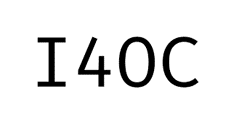Estrategias de afrontamiento y perspectivas de solución de la comunidad educativa frente al acoso escolar (bullying) en Lima urbana 2014-2015
Palabras clave:
Acoso, Adolescencia, Comunidad educativaResumen
El acoso escolar o bullying es un problema psicosocial a nivel nacional como en otros países, que afecta a muchos adolescentes y también a niños. Se considera acoso cuando la hostilización es reiterativa y altera el normal desenvolvimiento del escolar. Se utilizó una metodología cualitativa, descriptiva y transversal con enfoque etnográfico, fundamentado en la observación naturalista del entorno escolar, aplicando entrevistas a profundidad, grupos focales y observaciones sistemáticas. El objetivo general fue describir el acoso escolar (bullying), las estrategias de afrontamiento y las perspectivas de solución que utiliza la comunidad educativa (padres, profesores y alumnos) frente al mismo. Las estrategias de afrontamiento al acoso por parte de las autoridades educativas fueron las de minimización y evitación de ésta problemática. Entre los alumnos primó el distanciamiento y la evitación como estrategias de afrontamiento. Los padres consideraron como prioridad estratégica, el control y la educación otorgada en las instituciones educativas. Los alumnos plantearon como soluciones al acoso, el mayor acercamiento de sus familiares y profesores. Las perspectivas de solución de los alumnos frente al acoso fueron más numerosas que las de profesores y padres.
Descargas
Referencias
Arévalo, M., Gupio, G. y Velásquez, W. (2000). Prevención de conductas violentas en adoles- centes a través de un Programa de Habilidades Sociales. Anales de Salud Mental. Instituto Nacional de Salud Mental Honorio Delgado Hideyo Noguchi. Lima: 16(1): 13-54.
Alvárez, D.; Álvarez, L.; Núñez, J. y González, P. (2010). Violencia en los centros educativos y fracaso académico. Revista Iberoamericana de Psicología y salud. 1(2) pp. 139-153.
Avilés, J. (2010). Éxito escolar y ciberbullying. Boletín de Psicología, (98): 73-85.
Benítez, J.; Fernández, M. y Berbén, A. (2005). Conocimiento y actitud del maltrato entre alumnos (Bullying) de los futiros docentes de educación infantil, primaria y secundaria. Revista de Enseñanza Universitaria. 26 (1) pp. 71-84
Carrera, M, Lameiras, M & Rodríguez, Y. (2007). Estudio del maltrato escolar entre iguales con alumnos de educación secundaria obligatoria. En: Barca A, Pelarbo M, Porto AM,
Duarte B & Almeida L, editores. IX Congreso Internacional gallego-portugués de Psicope- dagogía. Universidade da Coruña, España.
Ccoicca, T. (2010). Bullying y funcionalidad familiar en una Institución Educativa del distri- to Comas. Tesis para optar el título profesional de licenciado en psicología. Universidad Nacional Federico Villareal, Lima. Recuperado de http://www.monografias.com/traba- jos-pdf4/bullying-funcionalidad-familiar/bullying-funcionalidad-familiar.pdf
Cepeda-Cuervo, E., Pacheco P., García-Barco, L & Piraquive-Peña, C. (2008). Acoso Escolar a Estudiantes de educación básica y media. Rev Salud Pública. Bogotá. 10(4): 517-528.
Cuadrado I, Fernández I & Ramos J. (2010). Enseñar y aprender a convivir en los centros educativos: Análisis de la realidad educativa y programas de intervención. Recuperado de: http://redined.mecd.gob.es/xmlui/bitstream/handle/11162/30266/00920100008879.pd- f?sequence=1
Del Moral, G., Suárez, C. & Musitu, G (2013). El bullying en los centros educativos: propuestas de intervención de adolescentes, profesorado y padres. Apuntes de Psicología. 31(2):203-
Recuperado de http://www.apuntesdepsicologia.es/index.php/revista/article/view/323
Elizalde, A. (2010). Estudio descriptivo de las estrategias de afrontamiento del bullying en profeso- rado mexicano. Electronic Journal of Research. Recuperado de http://www.siseve.pe/Seccion/ DownloadPDF
García, X, Pérez, A & Nebot, M. (2010). Factores relacionados con el acoso escolar (bullying) en los adolescentes de Barcelona. Gac Sanit. 24(2): 103-108.
Gómez, A. (2013). Bullying: el poder de la violencia. Una perspectiva cualitativa sobre acosadores y víctimas en escuelas primarias de Colima. Revista Mexicana de Investigación Educativa. 18 (58) pp. 839-870
Guiso, A. & Ospina, V. (2010) Naturalización de la intimidación entre escolares: un modo de construir lo social. Revista Latinoamericana de Ciencias Sociales, Niñez y Juventud, 8(1), 535-556.
Lazarus R, Folkman SE. (1986). Procesos cognitivos. Barcelona: Martinez Roca.
Merrell, K. W., Gueldner, B. A., Ross, S. W., & Isava, D. M. (2008). How effective are school bullying intervention programs? A meta-analysis of intervention research. School Psychology Quarterly, 23(1), pp. 26-42.
Núñez, M., Herrero, S., Herrero, S. & Aires, M. (2006). Diez referencias destacadas acerca de acoso escolar. Anuario de Psicología Clínica y de Salud. 2:35-50. Recuperada de http://insti- tucional.us.es/apcs/doc/APCS_2_esp_35-50.pdf
Oliveros, M & Barrientos, A. (2007). Incidencia y Factores de Riesgo de la Intimidación (Bullying) en un colegio particular de Lima-Perú. Rev. Perú Pediatr.; 60(3): 150-155.
Olweus, D. (1998). Conductas de acoso y amenaza entre escolares. Madrid: Morata. Trianes, M. (2000). La convivencia en contextos escolares. Málaga: Aljibe.
Descargas
Publicado
Número
Sección
Licencia
Derechos de autor 2019 PsiqueMag

Esta obra está bajo una licencia internacional Creative Commons Atribución-NoComercial-SinDerivadas 4.0.
Usted es libre de:
- Compartir — copiar y redistribuir el material en cualquier medio o formato
- El licenciador no puede revocar estas libertades mientras cumpla con los términos de la licencia.
Bajo las condiciones siguientes:
-
Reconocimiento — Debe reconocer adecuadamente la autoría, proporcionar un enlace a la licencia e indicar si se han realizado cambios<. Puede hacerlo de cualquier manera razonable, pero no de una manera que sugiera que tiene el apoyo del licenciador o lo recibe por el uso que hace.













